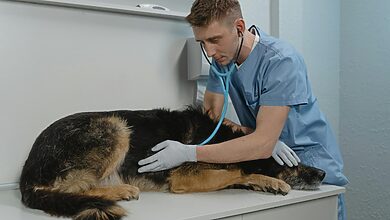Unlocking Pets Mental Health: Expert Tips for Supporting Your Pet’s Emotional Well-being

Just like humans, our beloved pets experience a range of emotions that contribute to their overall well-being. While we’ve come a long way in understanding animal behavior, the concept of pet mental health is still relatively new. This is where we come in.
In this article, we’ll delve into the fascinating world of pets happiness and psychology, exploring the signs, causes, and solutions to common pets mental health challenges faced by our furry, feathered, or scaly companions. From anxiety and depression to behavioral issues, we’ll provide practical advice and expert insights to help you support your pet’s emotional well-being.
Let’s embark on this journey together to create a happier, healthier life for your furry friend.
Understanding Pet Mental Health
What is Pet Mental Health?
Pet mental health refers to the emotional and psychological well-being of animals. It encompasses a pet’s ability to enjoy life, maintain a healthy level of activity, and form stable relationships with humans and other animals. Just like humans, pets can experience emotions such as joy, fear, anxiety, and depression. Understanding these emotions and recognizing the signs of mental health issues in pets is essential for providing appropriate care.
The Science Behind Pet Emotions
Research into pet emotions reveals that animals have complex emotional lives. Studies have shown that pets, especially dogs and cats, experience a wide range of emotions, including happiness, sadness, fear, anger, and love. These emotions are influenced by factors such as genetics, environment, and experiences. Understanding the science behind pet emotions helps pet owners recognize and address their pets’ emotional needs more effectively.
Common Mental Health Issues in Pets
Anxiety
Pets can experience anxiety due to various reasons, including separation from their owners, changes in their environment, or traumatic experiences. Signs of anxiety in pets include excessive barking, destructive behavior, pacing, and aggression.
Depression
Pets can become depressed due to the loss of a companion, a significant change in their environment, or health issues. Symptoms of depression in pets include lethargy, loss of appetite, withdrawal from social interactions, and changes in sleeping patterns.
Phobias
Pets can develop phobias to certain stimuli, such as loud noises (thunderstorms or fireworks), certain objects, or specific situations. Phobias can lead to extreme fear responses, including hiding, trembling, and attempting to escape.
Obsessive-Compulsive Disorder (OCD)
Pets can exhibit repetitive behaviors, such as excessive licking, tail chasing, or constant barking. These behaviors can be a sign of OCD, which can be triggered by stress, boredom, or underlying medical conditions.
Recognizing Signs of Mental Health Issues in Pets
Behavioral Changes
Changes in your pet’s behavior can be an indicator of underlying mental health issues. Common signs to look out for include:
- Aggression: Sudden aggression towards people or other animals can indicate fear, anxiety, or pain.
- Withdrawal: A pet that becomes withdrawn, avoids interaction, or hides more than usual may be experiencing depression or anxiety.
- Destructive Behavior: Chewing, digging, or destroying household items can be a sign of anxiety or boredom.
- Changes in Eating Habits: A loss of appetite or overeating can indicate stress, anxiety, or depression.
- Excessive Vocalization: Increased barking, whining, or howling can be a sign of anxiety or distress.
Physical Symptoms
Mental health issues can also manifest as physical symptoms. These can include:
- Excessive Licking or Grooming: Pets may lick or groom themselves excessively as a coping mechanism for anxiety or OCD.
- Changes in Sleep Patterns: Insomnia or excessive sleeping can indicate stress, anxiety, or depression.
- Digestive Issues: Stress and anxiety can lead to digestive problems, such as diarrhea or constipation.
- Weight Loss or Gain: Significant changes in weight can be a sign of underlying mental health issues.
Supporting Your Pet’s Emotional Well-being
Creating a Calm and Safe Space for Your Pet
Creating a safe and stable environment is essential for your pet’s emotional well-being. This includes providing a comfortable living space, regular routines, and minimizing stressful changes. Consider the following tips:
- Consistent Routine: Establishing a consistent daily routine for feeding, exercise, and playtime helps pets feel secure and reduces anxiety.
- Safe Space: Provide a designated safe space where your pet can retreat when they feel scared or overwhelmed. This could be a crate, a specific room, or a cozy corner with their bed and favorite toys.
- Gradual Changes: If you need to make changes to your pet’s environment, introduce them gradually to avoid causing unnecessary stress. For example, if you’re moving to a new home, gradually acclimate your pet to the new surroundings.
The Role of Exercise and Play in Pet Mental Health
Physical exercise and mental stimulation are crucial for maintaining your pet’s emotional well-being. Regular exercise helps reduce anxiety and stress, while mental stimulation keeps your pet’s mind engaged and prevents boredom. Consider the following activities:
- Daily Walks: Regular walks provide physical exercise and mental stimulation for dogs. They also offer an opportunity for socialization and exposure to different environments.
- Interactive Toys: Toys that require problem-solving, such as puzzle feeders or treat-dispensing toys, keep your pet mentally engaged and entertained.
- Training Sessions: Training sessions not only provide mental stimulation but also strengthen the bond between you and your pet. Teach your pet new tricks or commands to keep their mind active.
- Playtime: Regular playtime with your pet helps release pent-up energy and provides an outlet for natural behaviors, such as chasing, pouncing, or fetching.
Nutrition and Supplements for Pet Emotional Well-being
Nutrition plays a crucial role in your pet’s overall health and well-being, including their mental health. A balanced diet provides the necessary nutrients for optimal brain function and emotional stability. Consider the following tips:
- High-Quality Diet: Feed your pet a high-quality diet that is appropriate for their age, breed, and health condition. Consult with your veterinarian to choose the best diet for your pet.
- Omega-3 Fatty Acids: Omega-3 fatty acids, found in fish oil or certain pet foods, have been shown to support brain health and reduce inflammation. Consider adding omega-3 supplements to your pet’s diet.
- Avoid Artificial Additives: Avoid pet foods that contain artificial additives, preservatives, or fillers. These ingredients can negatively impact your pet’s health and behavior.
- Regular Feeding Schedule: Establish a regular feeding schedule to provide stability and prevent digestive issues. Avoid free-feeding, as it can lead to obesity and other health problems.
Seeking Professional Help for Your Pet’s Mental Health
If you notice persistent signs of mental health issues in your pet, seeking professional help is essential. Veterinarians, animal behaviorists, and pet therapists can provide valuable insights and treatment options. Consider the following steps:
- Consult Your Veterinarian: Schedule a check-up with your veterinarian to rule out any underlying medical conditions that may be affecting your pet’s behavior.
- Animal Behaviorists: Certified animal behaviorists can assess your pet’s behavior and develop a customized behavior modification plan.
- Pet Therapists: Pet therapists specialize in treating mental health issues in pets. They can provide therapeutic interventions, such as cognitive-behavioral therapy, to help your pet cope with anxiety, phobias, and other emotional challenges.
Preventing Pet Separation Anxiety
Separation anxiety is a common issue in pets, particularly dogs. It occurs when pets become distressed and anxious when separated from their owners. Signs of separation anxiety include excessive barking, destructive behavior, and house soiling. To address separation anxiety:
- Gradual Departures: Gradually accustom your pet to being alone by starting with short departures and gradually increasing the duration. Use positive reinforcement and rewards to create positive associations with being alone.
- Interactive Toys: Provide interactive toys or puzzle feeders to keep your pet occupied and mentally stimulated while you’re away.
- Create a Safe Space: Designate a safe space where your pet feels secure and comfortable when you’re not home. This could be a crate, a specific room, or a cozy corner with their bed and favorite toys.
- Professional Help: If your pet’s separation anxiety is severe, consult with a veterinarian or a professional animal behaviorist. They can provide additional strategies and may recommend medication to help manage anxiety.
Building Trust and Confidence in Your Pet
Building trust and confidence in your pet is essential for their emotional well-being. Trust and confidence help pets feel secure, reducing anxiety and fear. Consider the following tips:
- Positive Reinforcement: Use positive reinforcement techniques, such as treats, praise, and affection, to reward desired behaviors. This helps build trust and encourages your pet to repeat positive behaviors.
- Consistent Training: Consistent training helps build your pet’s confidence and strengthens your bond. Use positive reinforcement methods to teach commands and address behavioral issues.
- Patience and Understanding: Be patient and understanding with your pet, especially if they are fearful or anxious. Avoid punishment, as it can damage trust and exacerbate anxiety.
The Power of Positive Reinforcement
Positive reinforcement is a powerful tool for shaping your pet’s behavior and supporting their emotional well-being. By rewarding desired behaviors with treats, praise, or playtime, you can encourage your pet to repeat those behaviors. Positive reinforcement helps build trust, confidence, and a strong bond between you and your pet.
The Importance of Socialization for Pets
Socialization is crucial for your pet’s emotional well-being. Positive interactions with humans and other animals help reduce anxiety and prevent behavioral problems. Consider the following tips:
- Early Socialization: Start socializing your pet from a young age to help them become comfortable with different people, animals, and environments. Gradually expose them to new experiences in a positive and controlled manner.
- Playdates: Arrange playdates with other friendly pets to provide social interaction and prevent loneliness. Ensure that the playdates are supervised and that the pets are compatible.
- Quality Time: Spend quality time with your pet, engaging in activities that they enjoy. This strengthens your bond and provides emotional support.
Managing Stress and Anxiety
Managing stress and anxiety is crucial for your pet’s emotional well-being. There are various strategies and tools that can help alleviate anxiety and promote relaxation. Consider the following options:
- Calming Products: Calming products, such as pheromone diffusers, anxiety wraps, or calming supplements, can help reduce anxiety in pets. Consult with your veterinarian to find the most suitable products for your pet.
- Desensitization and Counterconditioning: Desensitization and counterconditioning techniques can help pets overcome specific fears or phobias. Gradually expose your pet to the feared stimulus in a controlled and positive manner, rewarding calm behavior.
Addressing Specific Mental Health Issues
Separation Anxiety
Separation anxiety is a common issue in pets mental health, particularly dogs. It occurs when pets become distressed and anxious when separated from their owners. Signs of separation anxiety include excessive barking, destructive behavior, and house soiling. To address separation anxiety:
- Gradual Departures: Gradually accustom your pet to being alone by starting with short departures and gradually increasing the duration. Use positive reinforcement and rewards to create positive associations with being alone.
- Interactive Toys: Provide interactive toys or puzzle feeders to keep your pet occupied and mentally stimulated while you’re away.
- Create a Safe Space: Designate a safe space where your pet feels secure and comfortable when you’re not home. This could be a crate, a specific room, or a cozy corner with their bed and favorite toys.
- Professional Help: If your pet’s separation anxiety is severe, consult with a veterinarian or a professional animal behaviorist. They can provide additional strategies and may recommend medication to help manage anxiety.
Noise Phobias
Noise phobias, such as fear of thunderstorms or fireworks, are common in pets. Loud noises can trigger extreme fear and anxiety, leading to trembling, hiding, or attempting to escape. To address noise phobias:
- Safe Space: Create a safe space where your pet can retreat during loud noises. This could be a crate, a specific room, or a cozy corner with their bed and favorite toys. Ensure the space is quiet and free from loud noises.
- Desensitization: Gradually expose your pet to the feared noise in a controlled and positive manner. Start with low volume recordings of the noise and gradually increase the volume over time, rewarding calm behavior.
- Calming Products: Calming products, such as pheromone diffusers or anxiety wraps, can help reduce anxiety during loud noises. Consult with your veterinarian to find the most suitable products for your pet.
- Professional Help: If your pet’s noise phobia is severe, consult with a veterinarian or a professional animal behaviorist. They can provide additional strategies and may recommend medication to help manage anxiety.
Regular Veterinary Check-ups
Regular veterinary check-ups are essential for maintaining your pet’s overall health, including their mental health. Your veterinarian can identify and address any underlying health issues that may be contributing to your pet’s behavioral problems. Consider the following tips:
- Annual Check-ups: Schedule annual check-ups with your veterinarian to monitor your pet’s health and catch any potential issues early.
- Vaccinations and Preventative Care: Ensure your pet is up-to-date on vaccinations and preventative care, such as flea and tick prevention and heartworm prevention.
- Dental Health: Maintain your pet’s dental health by providing regular dental cleanings and dental chews. Dental problems can cause pain and discomfort, leading to behavioral issues.
- Discuss Behavioral Concerns: If you notice any changes in your pet’s behavior, discuss them with your veterinarian. They can provide guidance and recommend appropriate interventions.
Pets Mental Health
Understanding and addressing your pet’s mental health is a vital aspect of responsible pet ownership. By recognizing the signs of emotional distress, providing a nurturing environment, and seeking professional help when needed, you can significantly improve your pet’s quality of life.
Remember, every pet is unique, and what works for one may not work for another. Be patient, observant, and compassionate as you navigate your pet’s emotional landscape. With love, care, and a little knowledge, you can create a happy and fulfilling life for your furry companion.
Let’s continue to foster a world where all pets are cherished and their emotional well-being is prioritized.
FAQ: About Pets Mental Health
1. What are the signs of anxiety or stress in pets?
Common signs of anxiety or stress in pets include excessive barking or meowing, destructive behavior, changes in appetite, increased grooming, restlessness, hiding, or aggression. If you notice any of these behaviors, it’s essential to consult with a veterinarian or animal behaviorist.
2. How can I help my pet cope with separation anxiety?
Gradual departures, providing plenty of mental and physical stimulation, and creating a comfortable, secure space can help alleviate separation anxiety. Avoid excessive affection before leaving, and consider using calming aids or pheromone diffusers. If the problem persists, consult a professional.
3. What are the causes of aggression in pets?
Aggression can stem from fear, territoriality, pain, or protective instincts. Spaying or neutering can help reduce aggression in some cases. Proper socialization, training, and addressing underlying medical issues are crucial. If aggressive behavior is severe, seek professional help.
4. How can I help my pet overcome fear or phobias?
Desensitization and counterconditioning are effective techniques for managing fears and phobias. Gradually exposing your pet to the feared stimulus while providing positive reinforcement can help reduce anxiety. Avoid punishment, as it can worsen the problem.
5. What role does diet play in pet mental health?
A balanced diet provides essential nutrients for overall well-being, including brain health. Some supplements, such as omega-3 fatty acids, may support mood regulation in pets. Consult your veterinarian before making dietary changes.
6. How can I provide mental stimulation for my pet?
Engage your pet’s mind with interactive toys, puzzle feeders, training sessions, and varied walks. Rotate toys to prevent boredom. For cats, provide opportunities for climbing, scratching, and exploring.
7. When should I consider professional help for my pet’s mental health?
If your pet’s behavior is significantly impacting your life or causing harm to themselves or others, it’s time to seek professional help. A veterinarian or animal behaviorist can provide guidance and treatment options.
8. How can I prevent loneliness and boredom in my pet?
Spend quality time with your pet daily, providing affection, play, and mental stimulation. Consider getting a companion animal or hiring a pet sitter or dog walker if you’re away for extended periods.
9. What is the role of exercise in pet mental health?
Regular exercise helps reduce stress, anxiety, and boredom in pets. It also provides opportunities for social interaction and mental stimulation. Find activities that your pet enjoys, such as walking, running, or playing fetch.
10. How can I create a calming environment for my pet?
Provide a quiet, secure space where your pet can relax. Use calming aids like pheromone diffusers or calming music. Minimize stressors in the environment, such as loud noises or excessive activity.








